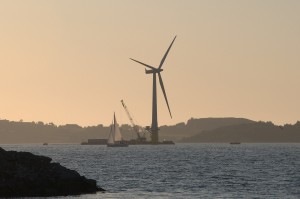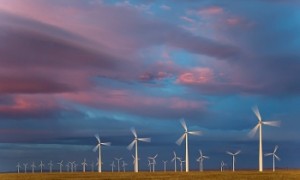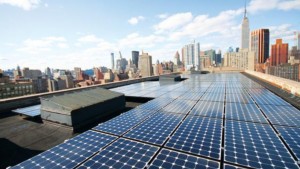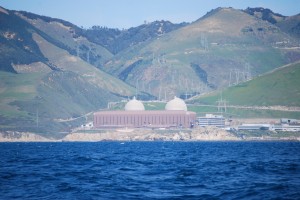587 item(s) were returned.
Principal
CACW|Watts
As we continue to debate what the future mix of grid generation will be, we should also critique projections of grid demand that suggest the largest share of future generation will continue to derive primarily from central power sources. Distributed resources like on-site wind, solar, and energy efficiency are filling U.S. power needs in greater amounts every year while also offsetting central generation requirements. The structure of our system is changing in ways many policymakers and investors are not seeing. It would be a mistake to underestimate the potential of clean energy. In 2015, the Energy Information Administration’s (EIA) figures… [more]
View InsightLeaders in Energy is an educational, professional networking, and advisory services organization which focuses on energy, environmental, and sustainability topics. We help to connect leaders and other committed professionals via on-line forums and in-person events to create an environment that nurtures the creation of innovative solutions leading to a sustainable energy system, economy and world. Topics include clean energy; renewable, fossil, nuclear, and energy storage technology; the circular economy; green finance, green jobs; “Four Generation” talent, Showcases at universities; green infrastructure, energy and water; biodiversity; community and corporate responsibility, project implementation, etc. Key building blocks of the organization involve utilizing… [more]
View InsightPublisher
Atomic Insights LLC
Deepwater Wind recently completed construction on the last of five massive, 6 MWe peak capacity wind turbines that make up the 30 MWe Block Island Wind Farm. By the end of 2016, the developer expects that the project will enter commercial operation and begin providing the first electricity from offshore wind turbines to the U.S. electricity grid. It is a development with far-reaching implications and several lessons available to be learned. This modest-sized installation has been in the works since 2008. Initially, the public utility commission (PUC) rejected the project’s negotiated power purchase agreement (PPA) on the basis of excessive… [more]
View InsightPartner
PiPRO Consulting
If carried out as envisioned, the Paris Agreement on climate change signed in April 2016 will have enormous environmental and social effects. It will also shake the oil and gas industries to their foundations and transform their business models. In the U.S., the Paris Agreement will become the legitimizing framework for a national energy policy, based on climate peril, not security of supply. Given the prospects, my paper sketches a scenario in which carbon-intensive oil and gas suppliers evolve from their current form into highly-regulated fuel utility businesses with significant accountability for climate action at regional and city levels. The… [more]
View InsightSenior Scientist
UFA Ventures, Inc.
There have been many voices lately saying that renewables could produce 80% or more of the world’s energy by 2050 in order to limit global warming to 2.5°C, as long as we develop sufficient energy storage and bring up efficiency and conservation. But the real issue is raw materials. It takes about 500 tons of steel and 1000 tons of concrete per MW of wind power. Even more to connect them to the grid. The United States has used 40 million tons of steel to build 48,800 wind turbines totaling 74,512 MW and costing about 150 billion dollars. Wind energy… [more]
View InsightProfessor of Public Policy
Georgia Institute of Technology
City skylines have long been a symbol of innovation and prosperity. What you can’t see is that these same buildings are some of the largest energy consumers in the United States and are therefore responsible for significant amounts of the nation’s carbon pollution. In August 2015, President Obama and the U.S. Environmental Protection Agency released the final Clean Power Plan, regulating carbon pollution from existing power plants for the first time. Since then, many cities have released Climate Action Plans, setting targets for carbon emissions. The success of these two initiatives are mutually dependent. EPA’s Clean Power Plan requires strong… [more]
View InsightOn July 20th, the World Economic Forum in collaboration with the New York Governor’s office, organized a workshop focused on New York’s Reforming the Energy Vision (REV) initiative. A number of leading energy professionals participated, including representatives from the utility sector, capital markets experts, as well as current and former state utility regulators. Participants worked together to craft practical policy recommendations designed to advance the various NY REV goals. Participants discussed approaches utilities could take to engage low and moderate-income (LMI) customers. Currently, New York has 2.3 million LMI households, representing one-third of the state’s population. At current funding levels,… [more]
View InsightOn July 20th, the World Economic Forum in collaboration with the New York Governor’s office, organized a workshop focused on New York’s Reforming the Energy Vision initiative. A number of leading energy professionals participated, including representatives from the utility sector, capital markets experts, as well as current and former state utility regulators. Participants worked together to craft practical policy recommendations designed to advance the various reforming the energy vision goals. Significant dialogue centered around the need for technology and business innovation, with concerns stemming from a lack of utility shareholder funded research and development (R&D). In 2015, Some utilities spent… [more]
View InsightCo-Executive Director
The Institute for Carbon Removal Law and Policy, American University
The Paris Agreement establishes the objective of “[h]olding the increase in the global average temperature to well below 2°C above pre-industrial levels and to pursue efforts to limit the temperature increase to 1.5°C above pre-industrial levels . . .” However, in the negotiations leading up to Paris, and in its aftermath, it has become increasingly obvious that meeting even the less stringent of these two goals may prove extremely daunting. As a result, new technologies and alternative methods of generation, such as bioenergy, are receiving increased attention. Policymakers and climate scientists believe the only way to avoid passing critical climatic… [more]
View InsightCalifornia’s Renewables Portfolio Standard (RPS) requires 50% of utility retail sales derive from renewable sources by 2030. This includes ramping up efficiency, storage and renewable infrastructure, especially rooftop solar projects. A major California utility, Pacific Gas & Electric (PG&E) is addressing the RPS requirements in part by announcing the retirement of the Diablo Canyon Nuclear Power Plant by 2025 with production to be replaced by renewables and improved energy storage. Although carbon-free, nuclear power is not classified as a renewable energy source under California’s 50% mandate and as a result, California nuclear is beginning a phase-out. Implementation of the state… [more]
View Insight







